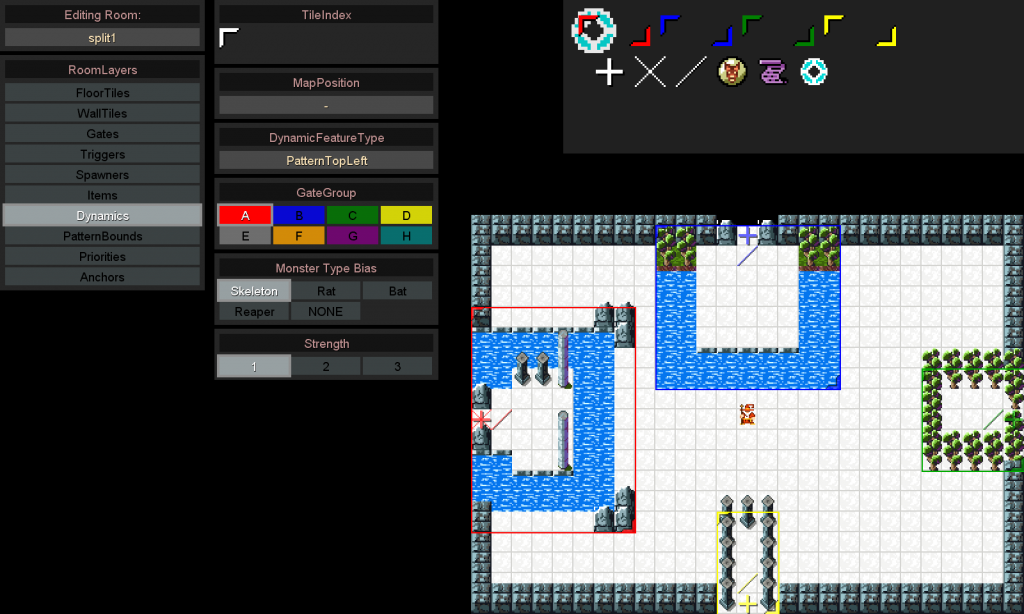I couldn’t shake the idea. This morning, my first order of business was trying out pixel-based movement for the Summoner.
It actually seems to work really well. Even placing summons felt natural–I’m having them align to a grid, double the resolution of the tiles, to keep it tidy. It’s actually a lot like how Escape Goat handled a combination of tile grid and pixel accurate movement. Now Aeox can block a two-tile wide corridor… we’ll see how that changes things at the micro level.
Enabling pixel based movement for the monsters opened up a can of worms. Since they swarm so close to one another, I had to bring some of what I learned about collision resolution from Escape Goat, to keep them from merging and overlapping. It brought me back to the good old days of 2011, when, for months on end, every SVN checkin was noted as “collision hell”. I can probably keep this visit much shorter (though I said that to myself every day back then). Collisions are nowhere near as complex as Escape Goat, so basic AABB testing should do the trick.
I’m looking forward to seeing how this will look with dozens of monsters packed tightly together–should be reminiscent of Gauntlet.

